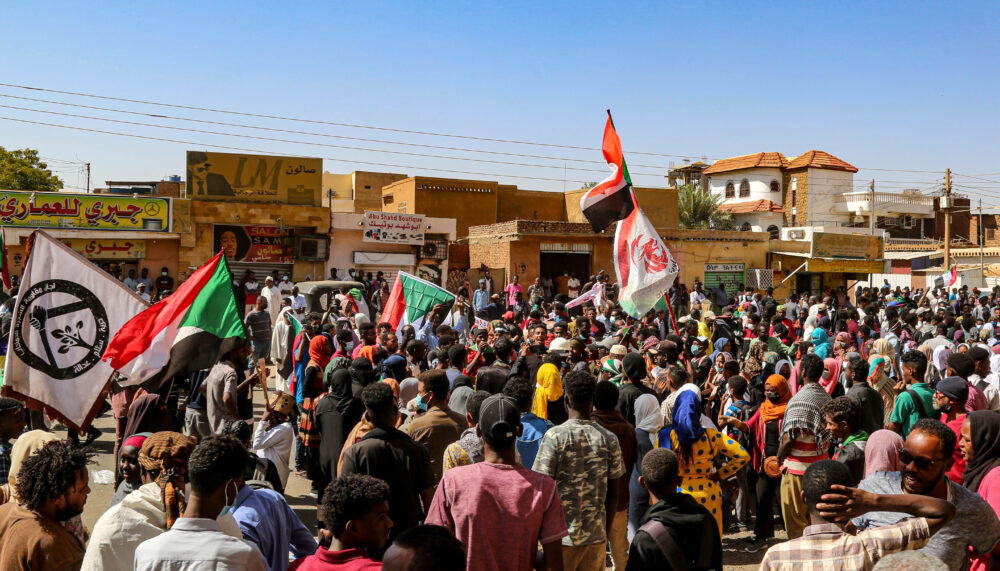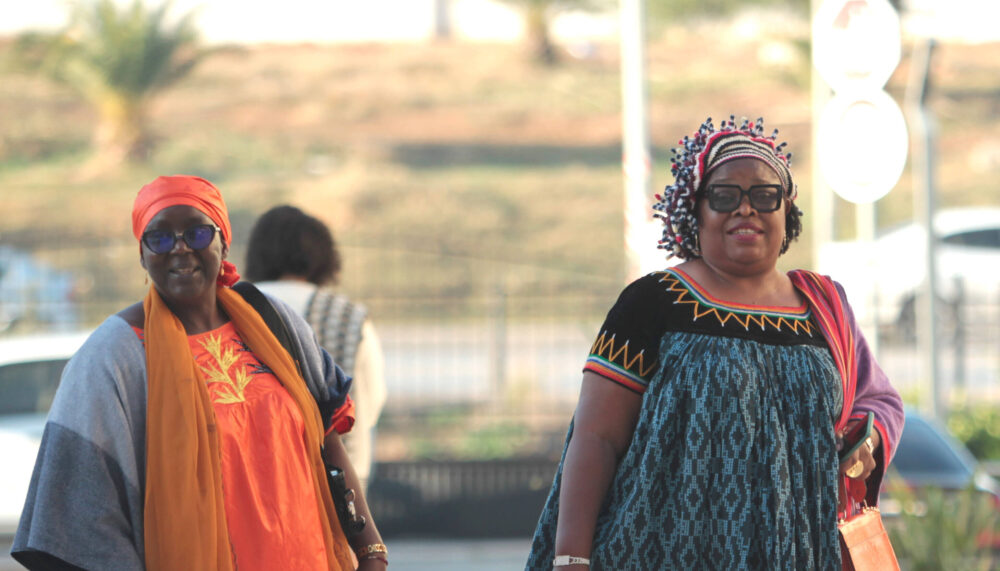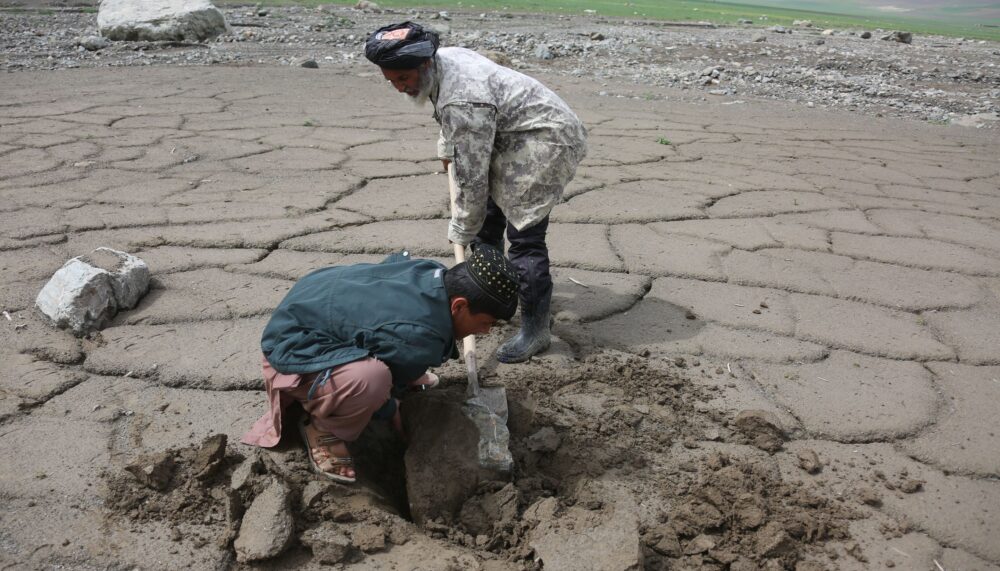BLOG POST | 14 Aug 2024
What role can nonviolent social movements play in peace talks?

Despite nonviolent movements being associated with more inclusive and durable peace agreements, they are rarely included in peace processes.
By Margherita Belgioioso, Matthew D. Cebul, Véronique Dudouet, Maria Antonia Montes, Bryan Sims
This article was originally published in the United States Institute for Peace: https://www.usip.org/publicati...
Key Takeaways:
- Nonviolent movements are linked to more inclusive peace negotiations and more durable peace accords.
- Diplomats know that social movements can help, but lack best practices for engaging with activists.
- More research is needed to understand how social movements contribute to conflict resolution.
When negotiations between the Colombian government and the rebel FARC group kicked off in 2013, only one of the 20 negotiators was a woman. Two years later, 20 percent of government negotiators and 43 percent of FARC negotiators were women. Their participation broadened the agenda of the talks that led to the historic peace accord, which included important gender provisions. Women’s participation in the Colombia peace process was a clear peacebuilding success—and it was ultimately made possible by a diverse national women’s coalition, which mobilised to insist on gender-inclusive negotiations.
This is just one example of how active civil society participation can be a crucial ingredient of successful official government negotiations — often referred to as “track 1” — to end armed conflict. Negotiation practitioners have engaged civil society organisations in some of the world’s most challenging peace processes. Yet achieving truly meaningful inclusion of diverse and often informally organised civil society interests is easier said than done.
One persistent difficulty has been how peace negotiations should include nonviolent social movements. Nonviolent activism is a powerful ally for peace. Social movements can kick-start negotiations by pushing warring parties to the table. They can legitimise negotiations by promoting equity, amplifying marginalised voices and rallying popular support around the accords. And after peace deals are struck, social movements can aid in monitoring and implementation, mobilising to hold signatories to account. Evidence shows that nonviolent movements are associated with more inclusive negotiations and more durable peace agreements, with less risk of conflict reversion.
Evidence shows that nonviolent movements are associated with more inclusive negotiations and more durable peace agreements, with less risk of conflict reversion.
And yet, social movements are rarely, if ever, recognised and included in formal track 1 peace processes. While formal civil society organisations or prominent activists may be invited occasionally, there remains a gap in understanding how social movements contribute to conflict resolution. International practitioners and researchers need a more systematic approach to fostering social movement inclusion in peace processes.
To address this gap, the U.S. Institute of Peace, in collaboration with the Berghof Foundation, Leeds University, and Humanity United, convened a conference on nonviolent action and track 1 peace negotiations. Activists, negotiation experts, academics, policymakers and donors discussed challenges and examined opportunities for social movement inclusion in recent armed conflict peace processes in Colombia, Myanmar, Sudan and Yemen.
Here’s what we learned.
1) Nonviolent social movements and negotiation practitioners need each other — and they know it.
With some important exceptions, the fields of nonviolent action and negotiation/mediation are largely estranged. Still, there is an earnest desire among both movement activists and negotiation experts to work together in the pursuit of inclusive peace processes and durable accords.
For their part, activists are often determined to influence peace negotiations and work tirelessly to make their voices heard. In some cases, activists seek direct inclusion at the negotiating table. For instance, Yemeni youth were heavily involved in the 2012-2014 national dialogue process, where they advocated consistently for democratic reforms before the Houthis terminated the process in 2014. And in Sudan, pro-democracy movements organised for years before the 2019 Sudanese uprising, and then lobbied vigorously (though largely unsuccessfully) to gain access to transitional negotiations.
At the same time, activists also value independence, and may fear that direct inclusion will lead to cooptation or the loss of their grassroots legitimacy. For these reasons, activists may avoid direct participation, opting to mobilise social movements outside but alongside peace processes. They may form parallel assemblies to produce recommendations for official negotiations, as with the Yemen women’s peace track initiative. Or they may exert constructive external pressure on negotiations via targeted protests, as in Liberia, where pro-peace women’s groups rallied outside of ongoing negotiations to demand a signed agreement.
Diplomats, too, recognise that social movements can be vital partners for peace. In some cases, mass mobilisation provides mediators with leverage needed to keep peace processes on track. Colombia’s peace process provides another pertinent example. A huge rural agrarian strike in 2013 compelled the government to adopt a more inclusive approach that incorporated social movement priorities during peace negotiations with the FARC, leading to the historic 2016 peace agreement. And when the referendum narrowly failed to pass, activists rapidly mobilised widespread demonstrations to demand continued progress, preventing the wholesale collapse of the process.
Diplomats also recognise that activists can be uniquely well-equipped to act as negotiators in their own right. Activists have local knowledge and connections that international mediators cannot hope to match. For instance, in Yemen, women’s activists had direct knowledge about political detainees, and were therefore valuable contributors to negotiations over political prisoners. Activists may also have increased legitimacy at the negotiation table, especially if they are formally nominated as representatives by movements or civil society actors more broadly. Mediators understand this and are making efforts to pull activists into negotiation/mediation spaces.
Building bridges between activist and negotiator communities is a vital task for contemporary conflict resolution and peacebuilding.
In short, negotiators and activists see the benefits of collaboration. Its absence is therefore less about willpower, and more about a lack of connections, resources or repertoires of engagement. Social movements do not operate via standard bureaucratic logic or speak in the familiar diplomatic parlance to which international mediators are accustomed. This means that practitioners need to adopt a “movement mindset” and remain patient as they take the time necessary to engage with informal and decentralised movements. Likewise, teaching activists more about how formal negotiations work might help them engage productively in these spaces. Building bridges between activist and negotiator communities is thus a vital task for contemporary conflict resolution and peacebuilding.
2) There is no one-size-fits-all approach to inclusion.
War to peace transitions can be incredibly complex. Any peace process could include many possible actors, like warring parties, social movements or political parties; contain many sub-processes, such as separate bilateral negotiations between different conflict parties or incremental negotiation stages; and be shaped by unique conflict legacies. Peace processes are rarely linear and resist easy categorisation or neat alignment with theory.
Social movements are no exception to this rule of complexity. Peace processes in Colombia, Myanmar, Sudan and Yemen over the last 15 years illustrate profound variation in whether and how social movements are able to engage in peace processes.
In Colombia, the ELN (another armed actor involved in negotiations with the government) has actively advocated for civil society representation in peace negotiations; in Sudan and Yemen, armed groups deliberately cut civil society out of negotiations. In Myanmar, nonviolent and violent resistance groups cooperate openly, the line between them blurred; in Colombia and Sudan, pro-peace activists have taken great pains to distinguish themselves from armed groups. Sudan, Colombia and Myanmar feature civic advocacy groups with deep grassroots bases, whereas Yemeni advocacy groups are generally more elite internationalist, at least after 2014. And across these cases, social movements have mobilised around demands for peace, democracy, independence, or all of the above, with this variation in goals shaping their relationships with the state and with warring parties.
These complexities demand flexibility in our approach to social movement inclusion in peace processes. It is impossible to prescribe a universal method or rubric for engagement. Which social movements to approach; whether to pursue inclusion at the table versus outside pressure “from the street”; whether and when to engage movement leaders; what inclusion modalities or parallel processes to enact: all of these decisions depend heavily on the conflict phase and context, and must be tailored to each case.
3) There is still a lot that we don’t know.
Lastly, there needs to be a stronger base of evidence to understand the mechanisms linking social movements to successful peace processes. Several topics seem especially relevant.
One important set of practical questions involves how to establish strong links between social movements and negotiation processes. What are the ideal characteristics for individuals to serve as bridge builders between the streets and the negotiation table, and how can we best elevate people with these qualities into negotiation roles? What practices enable social movements to generate the internal consensus needed to transform broad mobilising slogans into concrete proposals for inclusion in negotiations? Relatedly, social movements sometimes advocate for other, oftentimes marginalised, populations to be included at the table, not themselves — how should we understand this “movement sponsorship” in terms of movement inclusion in peace processes?
More attention should be paid to how activists navigate the many risks that they face when engaging with peace processes.
Another key set of questions involve complications from ongoing conflict. When faced with severe violence, practitioners are rightfully motivated to end conflict as quickly as possible, with the action usually focusing on the key warring parties. Yet these actors often oppose the inclusion of additional parties at the negotiation table, in an effort to preserve bargaining power for themselves. How should negotiation practitioners balance the urgent need to stop the fighting with the need to include social movements in negotiation processes, which increases the likelihood that peace accords actually endure?
Finally, more attention should be paid to how activists navigate the many risks that they face when engaging with peace processes. Grassroots activists catapulted into the public spotlight via prominent negotiations may suffer increased risks to their personal security. Forging painful compromises with hostile warring parties may undermine activists’ grassroots legitimacy, even if they do so in good faith. At the same time, inclusion presents a genuine risk of cooptation, diverting movement energies and watering down demands until movements lose momentum for change. Helping activists and negotiators learn how to mitigate these risks without abandoning elite-level negotiations wholesale is an important area of peacebuilding practice.
Margherita Belgioioso is an associate professor at the University of Leeds.
Matthew D. Cebul is a research officer with USIP's Program on Nonviolent Action.
Véronique Dudouet is a senior advisor for conflict transformation research at the Berghof Foundation.
Maria Antonia (Tonis) Montes is currently a senior program officer for the nonviolent action program at USIP.
Bryan Sims is the director of peacebuilding and partnerships at Humanity United.
Media contact
You can reach the press team at:
+49 (0) 177 7052758
email hidden; JavaScript is required


